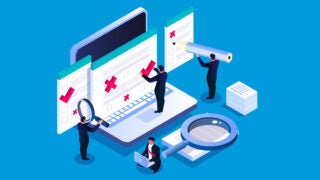Contact: Gary Polakovic (323) 527-7770 or polakovi@usc.edu
Can you imagine the Super Bowl without TV?

Daniel Durbin, professor at the USC Annenberg School for Communication and Journalism and director of the Institute of Sports, Media and Society at USC.
“The media narrative for the Super Bowl, entirely manufactured for TV, makes this one of the biggest festivals in America. Without that, what do you have? Twenty-two guys on a field beating the hell out of each other,” Durbin said.
He added:
- Super Bowl food and grocery sales are only exceeded by Thanksgiving.
- Strategic decisions by the NFL and TV networks in the 1970s propelled pro football to eclipse baseball as America’s favorite sport.
- Super Bowl has grown into an event — parties, special programming, halftime concerts, talk shows — bigger than the actual game.
- NFL became America’s dominant sport by dominating the dominant media at the time.
- Change — domestic abuse, racism, lack of diversity, head trauma, new media markets — pose new challenges for the NFL.
Durbin is an expert in sports media, popular culture, image management and marketing and branding.
Contact: ddurbin@usc.edu or (310) 745-3996
How far do football players push their bodies?
Francisco Valero-Cuevas, director of the USC Brain-Body Dynamics Laboratory and professor of biomedical engineering at the USC Viterbi School of Engineering and biokinesiology and physical therapy at the Herman Ostrow School of Dentistry of USC.
“In every down that’s played in the game, the body is taken to its physical limits. These athletes move explosively, catch balls with millisecond precision and generate forces several times their own body weight. There’s a lot of risk involved,” Valero-Cuevas said.
He added:
- Quarterbacks can thank primate ancestors for a specialized shoulder that gives humans a unique throwing capability.
- Wide receivers have remarkable muscle physiology, with legs to run all day, sprint and leap in bursts — a unique combination among athletes.
- Players tape their fingers so ligaments don’t tear when they grab jerseys to tackle an opponent running up to 22 mph.
- Receivers need only glance at the ball in flight to predict where to catch a deep pass, similar to how dragonflies snatch prey in midair.
Valero-Cuevas is an expert in biomechanics, neuromuscular control, robotics and injury rehabilitation technology and a principal in a sports rehabilitation company.
Contact: valero@usc.edu or (323) 423-0024
What’s the medical community doing to help football players?
Dominique Duncan, assistant professor of neurology at the Laboratory of Neuro Imaging at the Keck School of Medicine of USC.
“Football can be dangerous for a player’s brain if they get concussions. It’s a big risk, but there’s growing awareness in recent years, so we know more about traumatic brain injuries, treat injuries more seriously and realize the long-term effects,” Duncan said.
She added:
- Football players can suffer brain trauma similar to people in vehicle crashes, falls or explosions.
- Upon impact, the brain slams against the inside of the skull, damaging neurons and changing brain chemistry.
- Injuries can include short-term symptoms such as nausea, headache and memory loss, or long-term symptoms such as altered cognition, epilepsy and chronic traumatic encephalopathy (C.T.E.).
Duncan is an expert in brain networks, EEG analysis related to epilepsy and using big data to study neurological disease. She’s working on a 5-year, $21 million study of 300 cases of traumatic brain injuries and epilepsy at USC and other universities.
Contact: duncand@usc.edu or (323) 442-7246
How do trends in society influence the Super Bowl?

David M. Carter, professor of sports business at the USC Marshall School of Business and author of four books about the sport industry.
“You can just about guarantee some player will make a big play and go from obscurity to be a hero, gain endorsements and instant fame, and then disappear almost as fast,” Carter said.
He added:
- Politics affects the Super Bowl — played during an election year — as President Trump and candidate Michael Bloomberg each bought $10 million in ads for the game.
- The Super Bowl will return to the L.A. area in 2022 at the new SoFi Stadium in Inglewood, after a 29-year hiatus from the region.
- Paper tickets for Super Bowl are going the way of leather helmets as fans prefer tech convenience over a collectible stub or rip-off by ticket scalpers.
Carter is an expert in sports marketing, economics, business, salaries and public policy, and a principal in a sports consulting firm.
Contact: david.carter@marshall.usc.edu or (213) 434-1070
Illustration credit: 3D graphics image by Quince Creative





